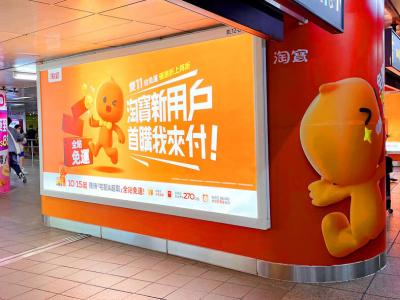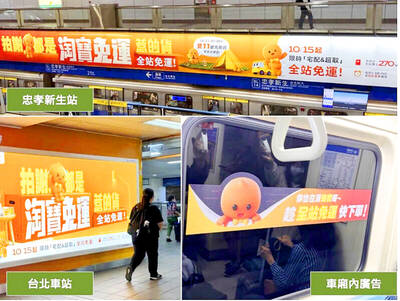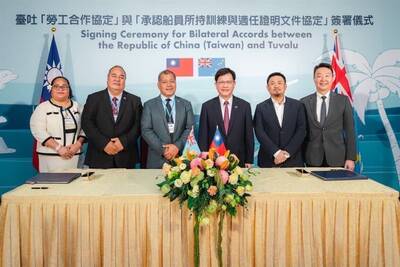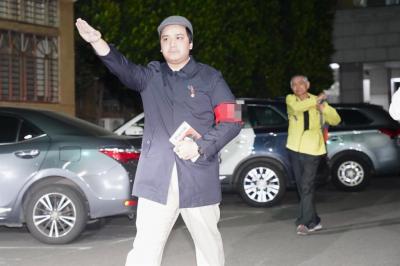Less than four months after the 228 Incident, the Chinese Nationalist Party (KMT) obtained its first group of 85 properties “transferred and appropriated” from the Japanese, the Cabinet’s Ill-gotten Party Assets Settlement Committee said on Sunday.
Taiwan was under Japanese rule from 1895 to 1945. The KMT government took over Taiwan after Japan lost World War II.
An investigation by the committee showed that in late April 1947, the Taiwan Provincial Administrative Executive Office, at the urging of the KMT’s central committee, sent the Executive Yuan in Nanjing and KMT director-general Chiang Kai-shek (蔣介石) a list of estimated prices at which the Executive Committee of the KMT Taiwan Province Chapter might obtain property held by the Japanese.
In June 1947, the Executive Yuan approved the request by the KMT Taiwan Province Chapter and instructed the Taiwan Provincial Administrative Executive Office to approve the chapter’s appropriation of 85 Japanese-owned buildings, the investigation showed.
One of the first 85 properties “transferred and appropriated” to the KMT, the Police Guest House (警察會館) — a Japanese colonial-era, three-story building in Taipei’s Akashicho — should have become a state asset after World War II, but it was taken over by the KMT’s Taiwan provincial chapter and turned into a party asset, an anonymous committee member said.
After the Taiwan provincial chapter moved to Taichung in 1957 and took the Taichung Public Hall (台中公會堂) as its office, the Police Guest House on Taipei’s Nanyang Street (南陽街) was transferred to the KMT’s Taipei chapter, the investigation showed.
The building was later sold by the KMT, turning a state property valued at NT$60 million (US$1.91 million at the current exchange rate) into private property, the committee member said.
The Japanese colonial-era Yorozuya Roykan (萬屋旅館) in Taipei’s Omotecho also became a KMT asset after World War II, the committee member said.
Also one of the first Japanese properties to be appropriated, the building was used to house KMT staff by the Taiwan provincial chapter, as well as for the Taiwan Daily (台灣日報), the committee member said, adding that the property had an estimated value of NT$8 million in the 1950s.
In Taipei’s Kyomachi, a Western-style building was used by the KMT as a “culture service club,” and in Taipei’s Hokumoncho, the Umeyashiki (梅屋敷) Japanese hotel and restaurant was used by the KMT for decades as the Dr Sun Yat-sen Memorial House (國父史蹟紀念館) before being sold to the Taipei City Government for NT$600 million, the committee member said.
The first list of properties “transferred and appropriated” by the KMT also includes prime real estate in Taipei owned by Japanese, the committee member said.
“Without spending a penny, the KMT turned state property into party property,” the committee member said, adding that the KMT still refuses to pay the NT$850 million sought by the committee.

The Ministry of Economic Affairs has fined Taobao NT$1.2 million (US$36,912) for advertisements that exceed its approved business scope, requiring the Chinese e-commerce platform to make corrections in the first half of this year or its license may be revoked. Lawmakers have called for stricter enforcement of Chinese e-commerce platforms and measures to prevent China from laundering its goods through Taiwan in response to US President Donald Trump’s heavy tariffs on China. The Legislative Yuan’s Finance Committee met today to discuss policies to prevent China from dumping goods in Taiwan, inviting government agencies to report. Democratic Progressive Party Legislator Kuo Kuo-wen (郭國文) said

The Ministry of Economic Affairs has fined Taobao NT$1.2 million (US$36,900) for advertisements that exceeded its approved business scope and ordered the Chinese e-commerce platform to make corrections in the first half of this year or its license would be revoked. Lawmakers have called for stricter supervision of Chinese e-commerce platforms and more stringent measures to prevent China from laundering its goods through Taiwan as US President Donald Trump’s administration cracks down on origin laundering. The legislature’s Finance Committee yesterday met to discuss policies to prevent China from dumping goods in Taiwan, inviting government agencies to report on the matter. Democratic Progressive Party

Taiwan and its Pacific ally Tuvalu on Tuesday signed two accords aimed at facilitating bilateral cooperation on labor affairs, according to Taiwan’s Ministry of Foreign Affairs (MOFA). The governments inked two agreements in Taipei, witnessed by Foreign Minister Lin Chia-lung (林佳龍) and visiting Deputy Tuvaluan Prime Minister Panapasi Nelesone, MOFA said in a news release. According to MOFA, the agreements will facilitate cooperation on labor issues and allow the two sides to mutually recognize seafarers’ certificates and related training. Taiwan would also continue to collaborate with Tuvalu across various fields to promote economic prosperity as well as the well-being of their

Sung Chien-liang (宋建樑), who led efforts to recall Democratic Progressive Party (DPP) Legislator Lee Kun-cheng (李坤城), was released on bail of NT$80,000 today amid outcry over his decision to wear a Nazi armband to questioning the night before. Sung arrived at the New Taipei District Prosecutors’ Office for questioning in a recall petition forgery case last night wearing a red armband bearing a swastika, carrying a copy of Adolf Hitler’s Mein Kampf and giving a Nazi salute. Sung left the building at 1:15am without the armband and covering the book with his coat. Lee said today that this is a serious